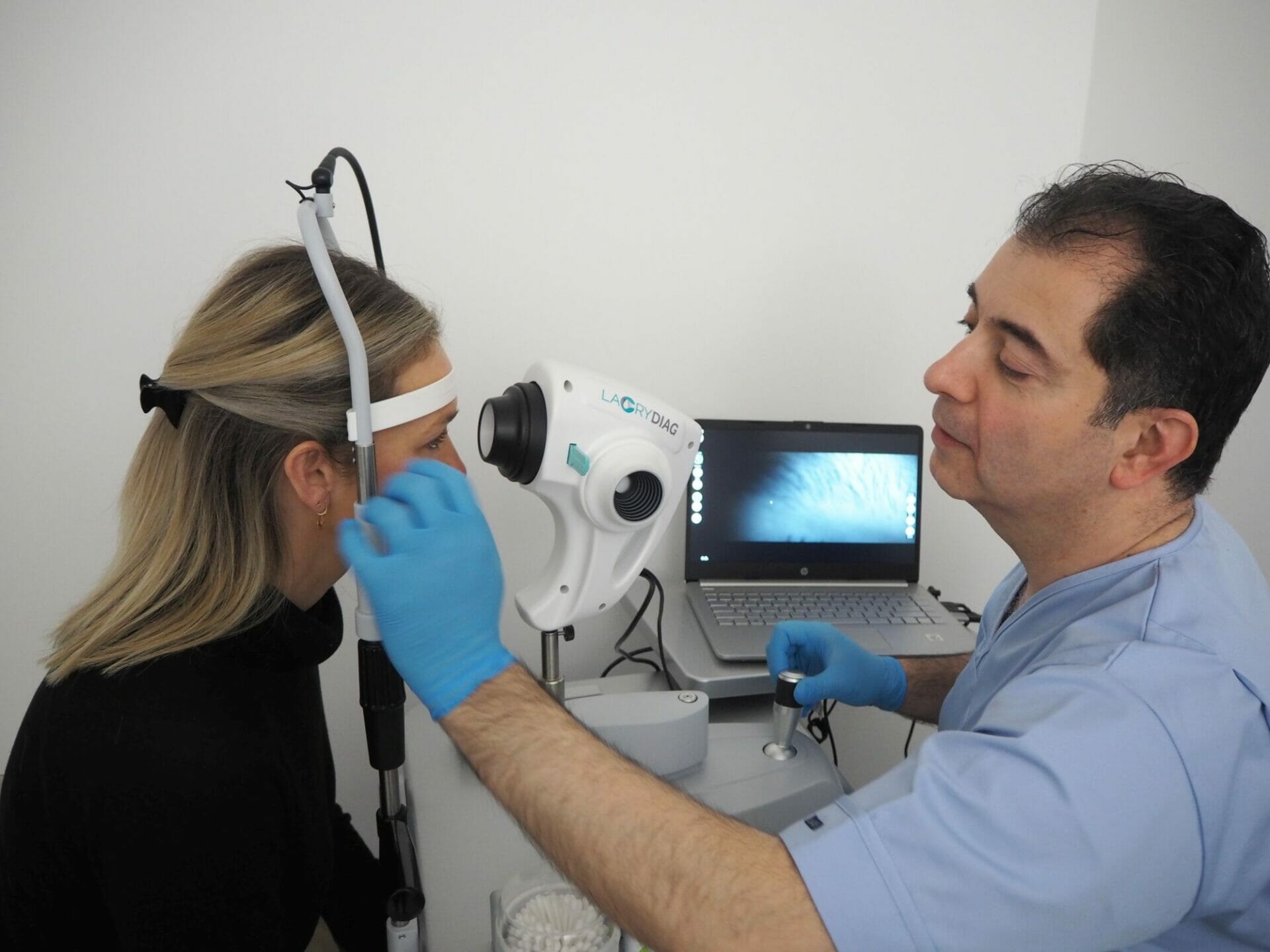Dry Eye Clinic
AT EYE CLINIC LONDON
How Our Dry Eye Clinic Works
FOCUS ON WHAT MATTERS MOST IN 3 EASY STEPS

STEP THREE: DIAGNOSIS AND TREATMENT
At Eye Clinic London we have a range of treatments depending on your symptoms and the health of your eyes.
IPL course – £995
IPL one-off – £250
IPL Eyes & Face course – £1300
IPL Eyes & Face One Off – £350
Find out more about Dry Eye treatments
Still unsure which treatment is for you?

About the expert
Mr Hamada | Consultant Ophthalmologist and Corneal Surgeon
MD, MSc, DO (hons), FRCSEd, FRCOphth I am Samer, founder and consultant ophthalmic surgeon with over 20 years’ experience in ophthalmology. I am a world-renowned specialist in cornea, cataract and refractive surgery. I’m not only a leading surgeon but also the only dual fellowship trained in corneal diseases in children from reputable institutions in the UK. At Eye Clinic London I work closely with other consultant ophthalmologists, optometrists and orthoptists to achieve the best outcomes for our patients. Our main aim is to make sure our patients get the safest and best treatments available to them. We put your safety before anything else so you can rest assured that if you choose us you will be in the best and safest hands.
Affiliations and memberships
I AM PROUD TO BE ASSOCIATED WITH THE FOLLOWING ORGANISATIONS
Dry Eye Disease
FIND OUT MORE ABOUT DRY EYE AND WHAT YOU ARE DEALING WITH
Even more information about dry eye
VIDEO AND BLOG POSTS TO THAT FURTHER EXPLAIN AND ILLUSTRATE DRY EYE DISEASE AND TREATMENT
Can Dry Eye Cause Blindness?
Can Dry Eye Cause Blindness? Dry eye
What causes dry eyes?
Samer Hamada explains what causes dry eyes. He speaks about how technology has increased the number of people affected by dry eyes disease ...
How To Stop Dry Eyes At Night
How To Stop Dry Eyes At Night Dry
Waking Up With Dry Eyes: Causes & Treatment
Waking Up With Dry Eyes: Causes & Treatment













 An estimated 344 million people worldwide are affected by this chronic disease. And recent studies by TFOS (The Tear Film & Ocular Surface Society) showed that 1 in 3 people in the UK experiences symptoms of dry eyes.
An estimated 344 million people worldwide are affected by this chronic disease. And recent studies by TFOS (The Tear Film & Ocular Surface Society) showed that 1 in 3 people in the UK experiences symptoms of dry eyes.



